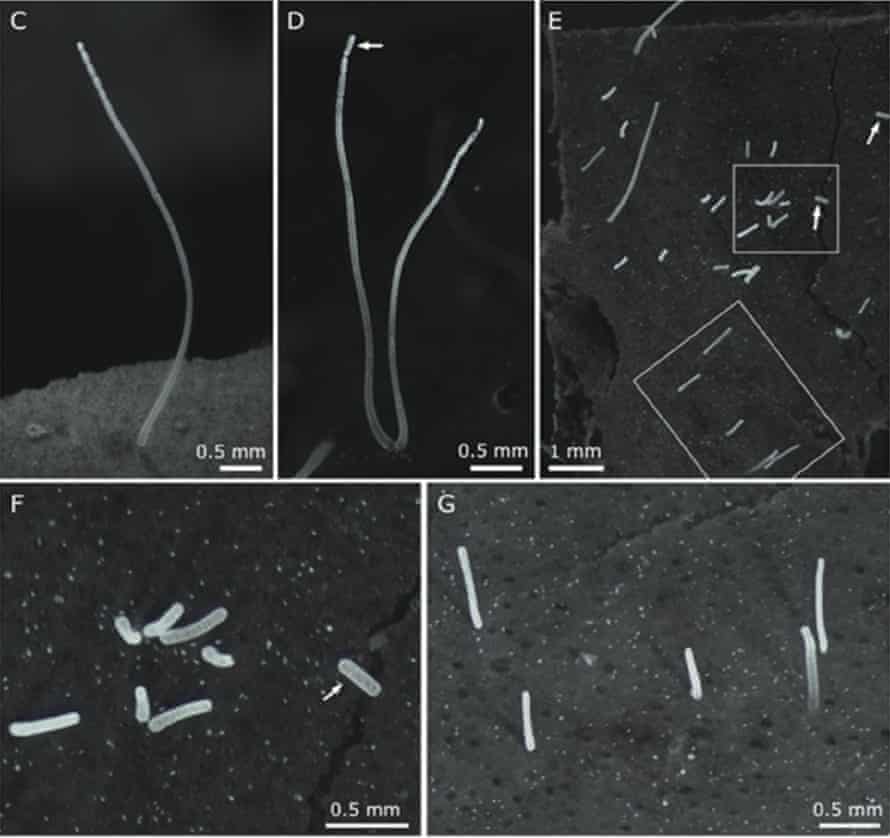Scientists have discovered the world’s largest known bacteria, which comes in the form of white threads the size of human eyelashes, in a swamp in Guadeloupe.
The length of the alien organism is about 1 cm, Thiomargarita magnifica, about 50 times larger than all known giant bacteria and the first to be seen with the naked eye. Thin white threads have been discovered on the surfaces of decaying mangrove leaves in shallow tropical marine swamps.
The discovery was surprising because, according to models of cell metabolism, bacteria simply shouldn’t grow this big. Scientists had previously proposed an upper bound on the size of about 100 times smaller than the new species.
“To put it in context, it would be like meeting another human the length of Mount Everest,” said Jean-Marie Foland, a scientist at Lawrence Berkeley National Laboratory who co-authored the study.

The organism was discovered by Olivier Gros, professor of marine biology at the University of the Antilles in Guadeloupe, while searching for symbiotic bacteria in the mangrove ecosystem.
“When I saw them, I thought: Strange,” Gross said. The laboratory first performed microscopic analyzes to establish that the sutures were single cells. Close examination also revealed a strange internal structure. In most bacteria, DNA floats freely inside the cell. Thiomargarita magnifica It appears to keep its DNA more organized within membrane-bound compartments throughout the cell. “And that’s very unexpected for a bacterium,” Foland said.
Bacteria were also found to contain three times as many genes as most bacteria and hundreds of thousands of copies of their genome scattered throughout each cell, making them extraordinarily complex.
Scientists do not yet know how the bacteria evolved to become so large. One possibility is that they have adapted to avoid predation. “If you grow hundreds or thousands of times larger than your predator, your predator cannot devour you,” Foland said.
Subscribe to the first edition, our free daily newsletter – every weekday morning at 7am GMT
However, for bacteria to become large means losing some of the traditional advantages of bacteria, including the unique ability to move around and colonize new niches. “By leaving the microscopic world, these bacteria definitely changed the way they interact with their environment,” Foland said.
The bacteria have not yet been found at other sites – and they disappeared from the original site when researchers returned recently, possibly because they are seasonal organisms. But in the paper published in the magazine SciencesThe authors concluded that the finding “indicates that large, complex bacteria may be hiding in plain sight.”

“Beer aficionado. Gamer. Alcohol fanatic. Evil food trailblazer. Avid bacon maven.”
